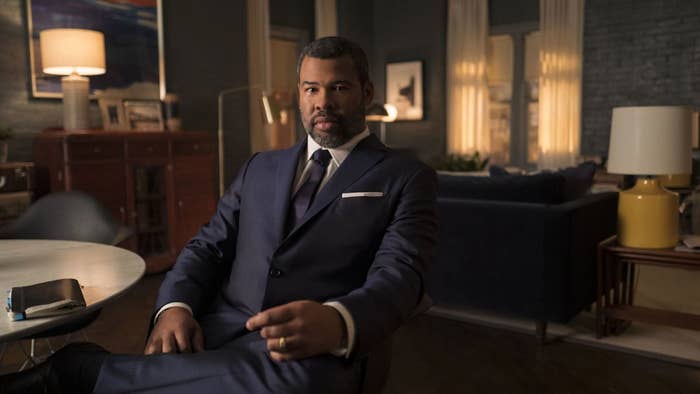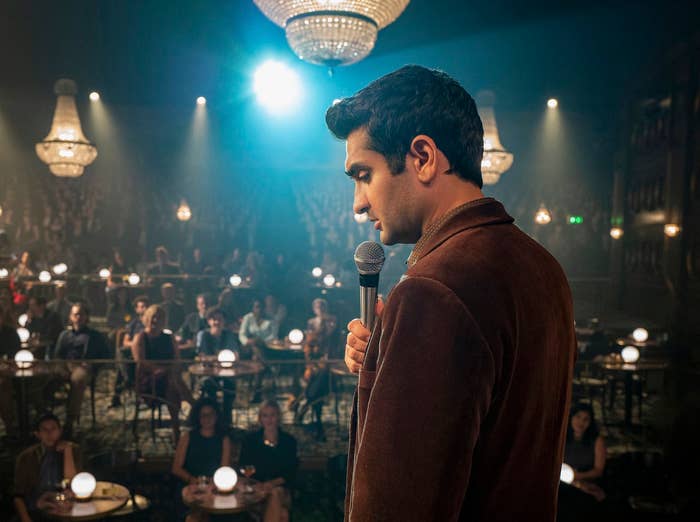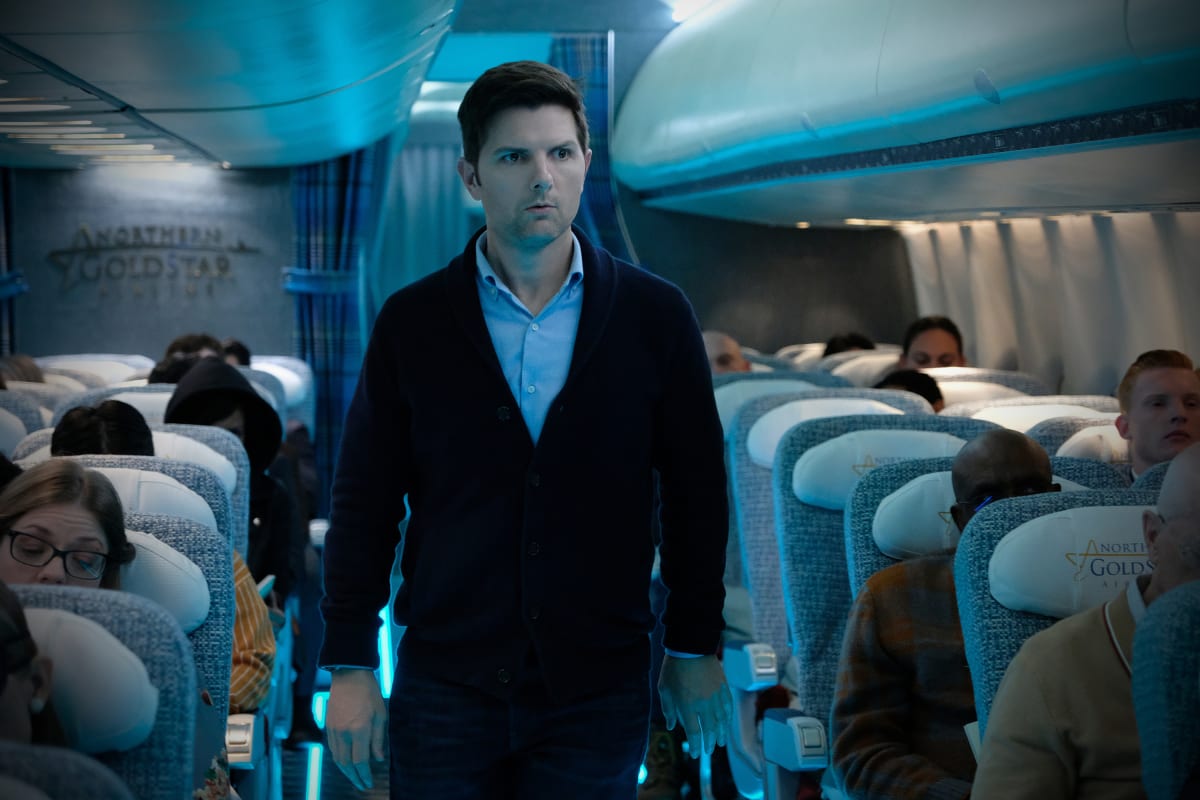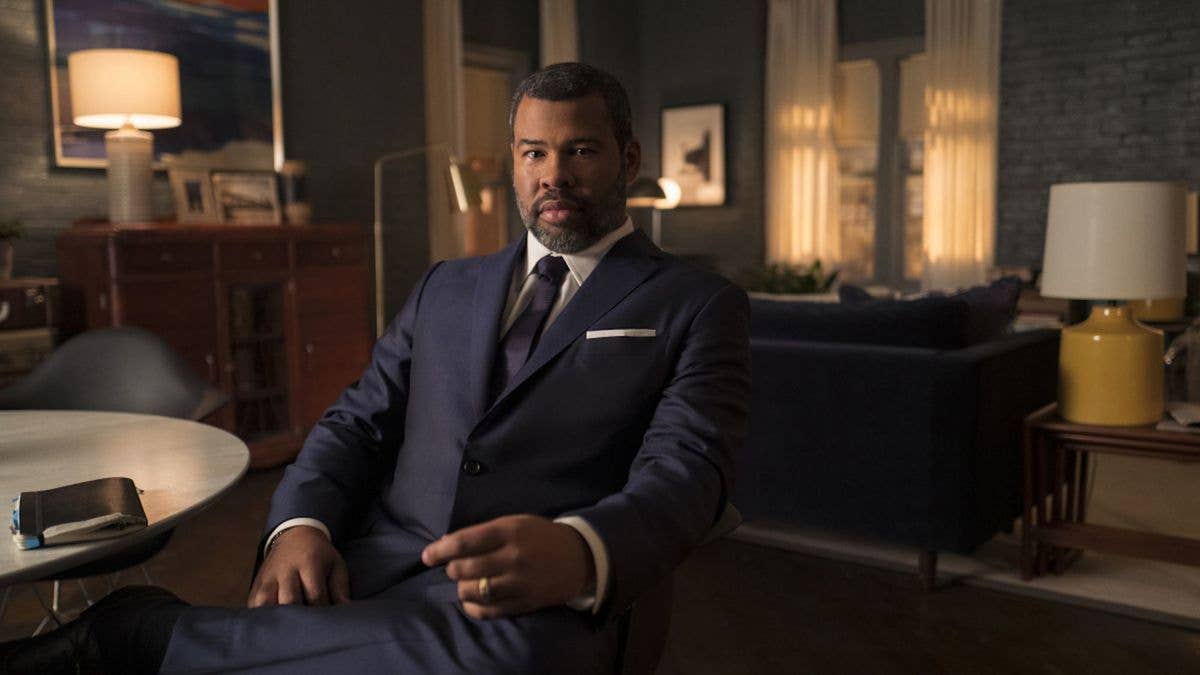
The best thing about CBS’ new revival of The Twilight Zone is that its total failure—or, to be more generous, its rocky start; four of the season’s 10 episodes were made available to critics—won’t be televised. As the latest bid for relevance amid the streaming service wars’ long-raging clash of kings, this new Twilight Zone will only be available on CBS All Access. Last summer, at the Television Critics Association press tour, CBS reported All Access as having a mere 2.5 million subscribers, with 4 million as a target goal for this year. It seems like a waste to relegate a revival of one of the greatest and most influential television shows ever made, produced and hosted by one of the hottest names in Hollywood, to a platform so few people are paying attention to. But after watching these first four episodes, maybe that’s a mercy.
The original Twilight Zone, which ran from 1959 to 1964, is a national treasure, sure, but in 2019 its legacy is hardly precious. The way Rod Serling Trojan horsed sociopolitical issues, Cold War anxieties, and other weighty themes into greater tales of suspense, horror, and science fiction still resonates today (NYE marathoners: roll call), but attempts at updating and modernizing the aesthetic persist. The Serling formula is frequently applied to new anthology shows that come and, inevitably, go, series that try to ape the parable-by-way-of-the-surreal equation but almost always feel diet at best, plodding and predictable at worst. And of the series proper? This will be the third revival, following resuscitations in 1985 then 2002, each with diminishing results—a downward trend the 2019 iteration unfortunately confirms.
In a New York Times interview pegged to Twilight Zone’s April 1 premiere, Jordan Peele (who executive produces alongside Simon Kinberg, Rod’s widow Carol Serling and more) describes his creative philosophy as staying one step ahead of the audience: “If you can predict where an audience thinks it’s going to go, you can use it against them. And they’ll love you for it.” The twist here, then, is that these new Twilight Zone episodes are woefully predictable. Worse yet, none are sufficiently scary, or weird, or affecting, let alone a healthy mix of all three.
It’s disappointing that, so far, Twilight Zone ’19 is hardly distinguishable from an episode of, like, Fear Itself or Nightmares & Dreamscapes. I could complain about the lack of anything that evokes the Twilight Zone aesthetic, or the absence of stylistic choices that bear a kinship with the OG and follow a thread from its influential roots to a modern update, aside from the theme song. Those would be quibbles, though. The real disappointment here is that, save Sanaa Lathan’s “Replay,” the screenplays and overall stories of these episodes, frankly, well, suck. The OG series had style and flair, but story? That’s the true hallmark of the brand, isn’t it? Its resonance half a century later lies with any given episode’s themes and the execution—or subversion—of those themes, as well as what Peele, speaking to the NYT, called “the Serling wink.”
The majority of the episodes provided are about as clever as Goosebumps. Kumail Nanjiani’s “The Comedian” is the worst of the group, with a premise rooted in the remarkably off-base idea that standup audiences in a post-Trump world wouldn’t welcome a politicized routine...as if that hasn’t become the topic de rigueur for the majority of stand-ups and late-night hosts. Still, that episode at least offers an interesting conceit within the first 15 minutes...and then goes on to repeat the same beat over and over again, ambling up to a predictable conclusion that Nanjiani is interesting during none of.

To binge these episodes is to confront one bemusing choice about this revival after another. Why court inevitable, unfair comparisons to the original by delivering an “homage” to the 1963 William Shatner-starring classic “Nightmare at 20,000 Feet”? Why invoke that episode only to pivot from Shatner’s spooky, paranoid visions of a creature lurking on the plane’s wing that no one else can see to what basically amounts to an episode-length rendition of Flightplan? Adam Scott fills in as the jittery protagonist; he finds a Zune pre-loaded with an Unsolved Mysteries-esque podcast detailing the disappearance of the very plane that he’s on. (As he listens to it first for clues and then straightforward direction, it becomes more of an homage to Shatner’s fortune-teller-obsessed episode “Nick of Time”.) Scott can never fail (he nails the reading for his last line on the plane), but his hour is rote and then full-on tanked by a truly goofy epilogue.
Why are these episodes an hour, by the way? The original series only went for the full-hour runtime in Season 4, producing episodes no one would count among their favorites, before quickly reverting to a half-hour structure in the fifth and final season. In an era where more dramas are embracing the brevity of a 30-minute median runtime, it’s curious that a show debuting on a streaming service wouldn’t push to do the same when half-hour stories are its roots. (And yet, each episode is still structured around act breaks, which I loved, admittedly. Maybe a network airing is in the cards down the line?)
The best episode of the bunch features Sanaa Lathan shepherding her son on a college road trip that quickly devolves into an inescapable nightmare, opposite the prolific character actor Glenn Fleshler. The themes and allegories are anvil-level blatant, the real-world relatability is on the nose, and the conclusion borders on saccharine, all of which is undercut by a strong lead performance and an underlying anxiety that’s powerfully familiar. Which is to say, it bears the most resemblance to an episode of The Twilight Zone—Serling was never subtle.
Peele’s involvement here is a curious one. He’d be the face of this relaunch even if he turned down the hosting duties (which he swears he deeply considered doing), his being the only household name on the producer list. But while executive producing content you have no tangible hand in is par for the course when building an empire like Peele aims to, this seems like an odd property not to exert a little auteurist flair over. Peele, who essentially made two feature-length Twilight Zone episodes worthy of the original, has no credit writing or directing the episodes provided. Instead, we get him in a big-boy Serling suit, picking up the host mantle but, beyond the sartorial, failing to evoke his energy—the Geico guy is less distracting. Serling had Charles Beaumont and the inestimable Richard Matheson as his writing lieutenants. TZ ‘19 has a nice B-list cast, and that’s where it stops. With Black Mirror beholden to tech-based parables and a penchant for conclusions that hew, as Peele put it, “darrrrrk,” the field was ripe for an anthology with a wider range and a less grim perspective. With franchise clout and Peele as host, Twilight Zone could’ve had Black Mirror running for its shinebox; instead it leaves the latter coming out on top as a poster for the benefits of thematic guidelines. Plenty of Black Mirror episodes miss the mark, but they’re almost inherently unpredictable.

With more than half a season in the chamber, there’s every chance that the revival finds its voice as it progresses. Sanaa’s episode is the third of the bunch; the following installment is boring, but it at least has fun allowing Steven Yeun to deploy big Burning energy as a mysterious outsider. The revival could potentially find its footing. But with no narrative through line forcing a specific sequence, it’s not wrong to assume the creative team viewed these four as, if not the strongest, then a strong representation of what the series has to offer. Peele, Kinberg, and Co. can flood their episodes with all manner of Easter eggs (references to everything from Shatner’s two episodes, “Living Doll,” and The Shining abound) and familiar faces, but all of those bells and whistles won’t help them validate excavating a beloved property for shallow fare that wouldn’t even be serviceable if it came independent of the IP.
During his NYT interview, Peele is watching “Mirror Image,” the episode in which a woman thinks her double is not only stalking her but assuming her identity. It takes place entirely in the banal setting of a bus depot; it’s a fan favorite that still holds up as being emblematic of some of the original run’s greatest strengths. The same can be said of “Nightmare at 20,000 Feet,” an episode that doesn’t even have weighty themes to boast of (besides maybe destigmatizing mental health?). It’s just tightly crafted and impressively paced. The 2019 Twilight Zone updates the title for the times, placing Adam Scott’s nightmare at “30,000 Feet” in a wider plane, with bigger cast and thinner story. Can we get much higher?

